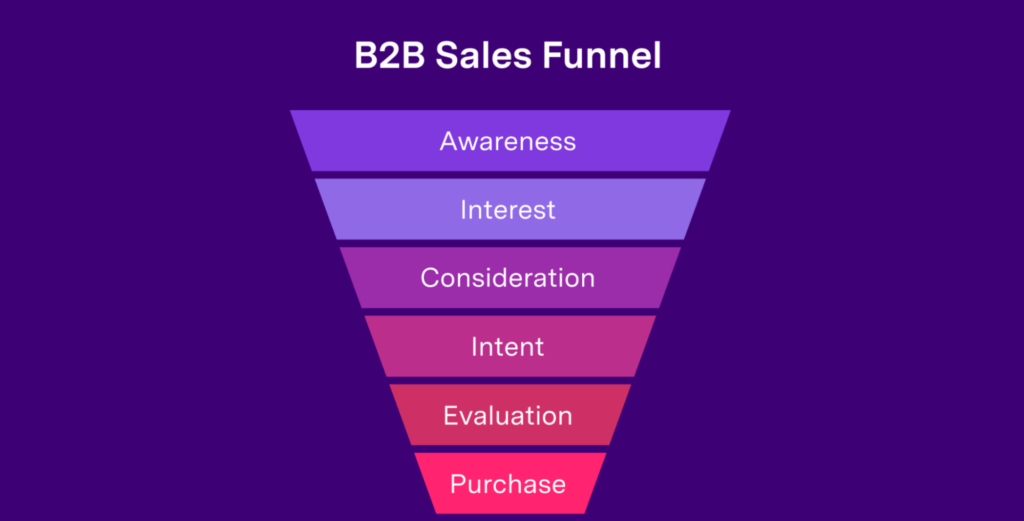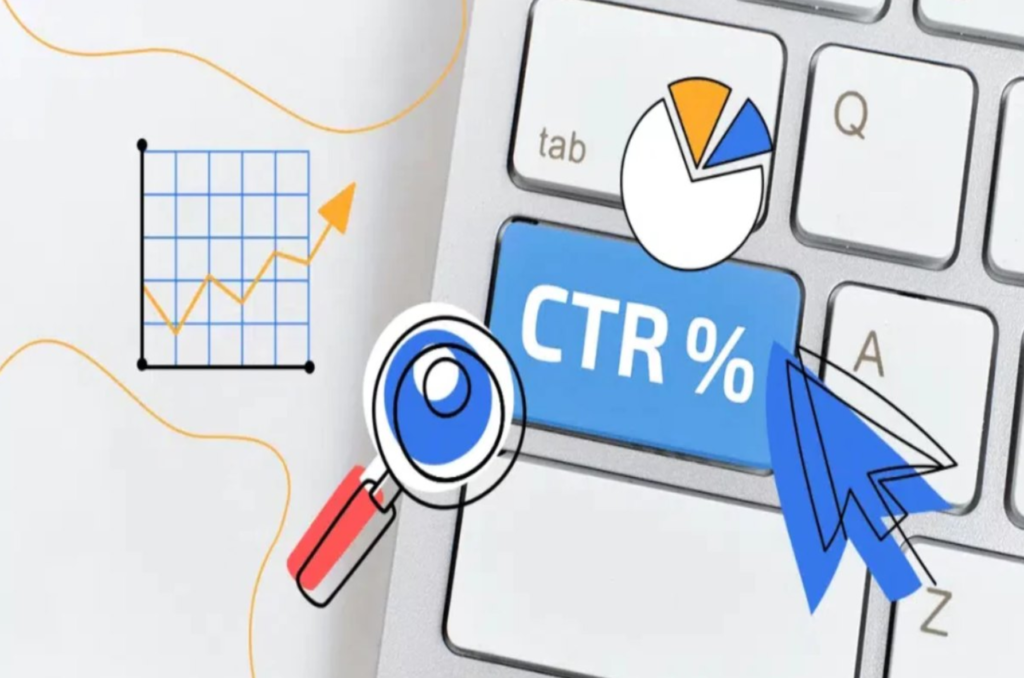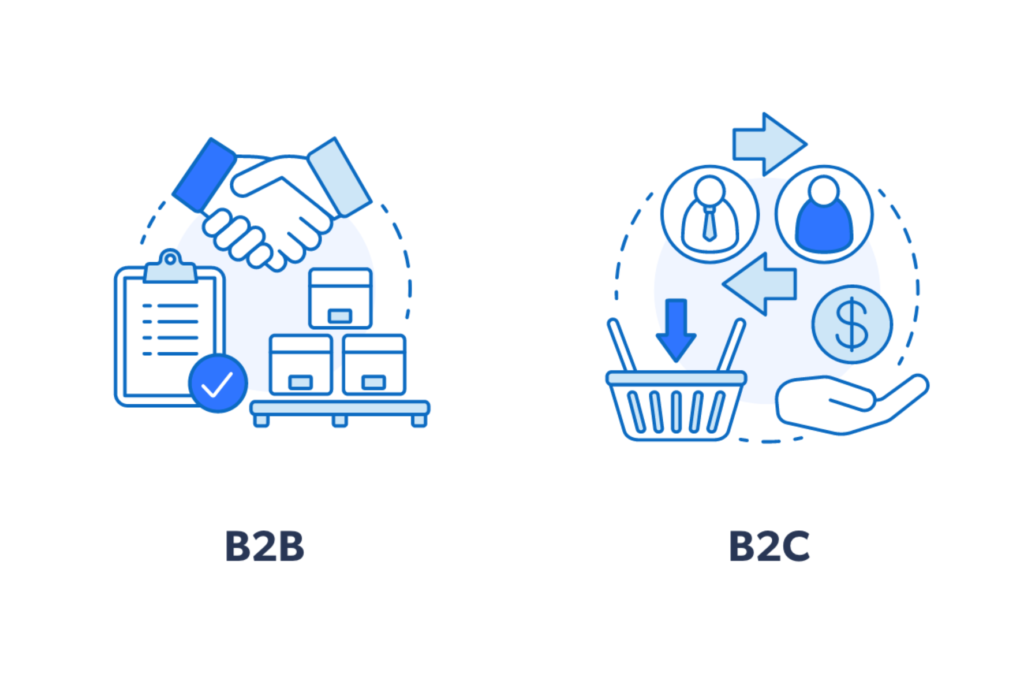In the ever-evolving and dynamic world of digital marketing, Conversion Rate Optimisation (CRO) has emerged as a critical and indispensable pillar in the quest for online success. It is a concept that transcends industry boundaries, impacting both B2B (Business-to-Business) and B2C (Business-to-Consumer) realms alike. To appreciate the essence and significance of CRO, one must delve into its intricacies, understanding the nuanced strategies and methodologies that power this transformative discipline. This guide is carefully crafted to cater to marketing professionals and enthusiasts, whether they operate within the B2B or B2C spheres, providing them with invaluable insights into the world of CRO.
What Is Conversion Rate Optimisation (CRO)?
Conversion Rate Optimisation, often referred to as CRO, is the art and science of enhancing your website or landing page to persuade visitors to take a specific desired action. This action might include making a purchase, filling out a contact form, signing up for a newsletter, or any other step that aligns with your business goals. For marketing professionals, CRO is a strategic process that involves understanding the user’s behaviour, preferences, and psychology to design a seamless path towards conversion.
The Unique Nature of B2B and B2C Businesses
B2B (Business-to-Business):

Business-to-business (B2B) is a commercial framework where one business interacts with another in the exchange of products or services. This model is characterised by its focus on serving the needs of other businesses, corporations, institutions, or government entities. In a B2B context, the primary goal is to supply goods or services that are fundamental to the operations, growth, or resale activities of the purchasing business.
B2B transactions often differ significantly from their B2C counterparts in several ways. First and foremost, the decision-making process in B2B transactions is notably more complex. It typically involves a multifaceted decision chain, with various stakeholders within the buying organisation, such as procurement teams, department heads, and senior executives. Decisions are influenced by factors like cost-effectiveness, long-term partnership potential, and the overall impact on the business.
Relationship-building is a critical element of B2B transactions. Building trust, reliability, and ensuring consistent quality are essential, as these attributes contribute to the formation of long-term partnerships. B2B interactions are often characterised by repeated transactions and ongoing collaboration between the involved businesses.
B2B transactions generally involve larger volumes and higher transaction values compared to B2C. These transactions can be regular and recurring, encompassing the procurement of raw materials for manufacturing, office supplies for a corporation, or software solutions for a large enterprise. Furthermore, B2B offerings are often customised to meet the specific needs of the buying business. Suppliers may tailor their products or services to address the unique challenges and requirements of their B2B clients.
In terms of marketing and sales strategies, B2B focuses on educating potential buyers about the practical benefits, cost savings, and return on investment (ROI) that their products or services can deliver. Marketing efforts include content marketing, participation in trade shows, attending industry conferences, and establishing personal relationships.
B2B transactions span a broad spectrum of products and services, ranging from manufacturing equipment, IT solutions, and consulting services to legal counsel, industrial chemicals, and more.
B2C (Business-to-Consumer):

Business-to-consumer (B2C) is a commercial model where businesses directly engage with individual consumers to sell products or services. This model is commonplace and encompasses everyday consumer transactions. B2C transactions differ from B2B in various ways, largely due to the distinct nature of the consumer market.
In B2C, the target audience primarily consists of individual consumers who make purchases for personal use. The decision-making process is relatively simplified, often involving a single individual or a small group within the household. Decisions are driven by personal preferences, needs, and desires.
The focus in B2C transactions is primarily transactional, with the primary objective being the completion of a sale. Consumers are typically looking for convenience, affordability, and a positive shopping experience. Branding and marketing play a significant role in B2C, as businesses aim to create an emotional connection with consumers. Brand loyalty and a memorable customer experience can lead to repeat business.
While individual transactions in B2C may have lower monetary values compared to B2B, the consumer market is vast, and businesses rely on high sales volumes to generate revenue. Mass marketing techniques, including advertising, social media campaigns, and e-commerce platforms, are commonly used to reach a wide consumer base. E-commerce websites, mobile apps, and online marketplaces have become central to B2C sales.
B2C businesses span a diverse array of consumer products and services, including traditional retail stores, online marketplaces, food delivery services, streaming platforms, travel agencies, and more. The B2C model is shaped by the diverse and ever-changing preferences of individual consumers, making it essential for businesses to adapt and tailor their offerings to meet consumer demands.
CRO Strategies for B2B
1. The B2B Sales Funnel
The B2B sales funnel is the foundation of CRO strategies in the business-to-business world. It consists of multiple stages, each demanding a unique approach.

In the awareness stage, marketing professionals aim to introduce potential business customers to their problems and the solutions offered. This involves creating educational content, thought leadership materials, and informative resources. The interest and consideration stage involves nurturing leads that have shown interest in your offerings. Email marketing and marketing automation become essential tools for keeping these prospects engaged.
Moving on to the decision and conversion/purchase stage, marketing professionals must focus on closing deals. Crafting compelling offers and demonstrating the value of your solutions are key here. In the post-purchase stage, your CRO efforts shift toward fostering loyalty and building lasting customer relationships. This phase requires customer retention strategies and exceptional post-purchase experiences to ensure repeat business and word-of-mouth referrals.
2. Nurturing Leads in B2B CRO
Nurturing leads is a vital component of B2B CRO. In the intricate world of business-to-business transactions, where the stakes are often high, and the decision-making processes are multi-layered, effective lead nurturing plays a pivotal role in the overall success of a marketing strategy.
But, what does nurturing leads in B2B CRO entail?
At its core, effective lead nurturing in the B2B realm is about delivering the right content, at the right time, to the right audience. It’s a highly personalised and dynamic process that hinges on understanding the specific needs, pain points, and aspirations of your potential clients.
- Targeted Personalisation: In the B2B space, generic, one-size-fits-all content simply won’t cut it. The ability to tailor your messaging to address the unique challenges and requirements of individual businesses is paramount. This entails not only understanding the industry in which your potential clients operate but also the nuances of their specific roles within their organisations. Marketing automation tools are indispensable in this regard. They allow you to segment your leads based on various criteria and send highly personalised messages that resonate with the recipient.
- Timely Engagement: The B2B buying cycle can be long and convoluted. Potential clients may spend months researching, evaluating, and comparing options before making a decision. Nurturing leads involves staying top-of-mind throughout this journey. Marketing automation tools also enable you to schedule follow-up communications, ensuring that you’re consistently engaging your leads at the right intervals without overwhelming them.
- Valuable Information: In the B2B world, your potential clients are seeking solutions to pressing problems. Your role is to provide valuable information that not only showcases your expertise but also addresses their specific needs and concerns. Whether it’s through informative blog posts, whitepapers, webinars, or case studies, the content you deliver should demonstrate your commitment to helping them achieve their objectives.

3. Creating Trust and Authority
Trust is a cornerstone of B2B relationships. Marketing professionals must establish themselves as experts in their industry. By consistently delivering valuable, relevant content, you can position your business as a trusted advisor, making potential clients more inclined to choose you when they’re ready to make a purchase.
4. Crafting Tailored Content
Content tailored to the unique needs of businesses is a cornerstone of B2B CRO. Marketing professionals must create materials that address the specific pain points, challenges, and objectives of their target organisations. Personalisation plays a significant role in tailoring content, ensuring that it resonates with decision-makers.
CRO Strategies for B2C
1. The B2C Customer Journey
In contrast to B2B, the B2C customer journey is marked by its focus on individual consumers. Each stage in this journey is influenced by emotions, personal preferences, and the desire for quick, gratifying experiences.

In the awareness stage, marketing professionals must employ captivating storytelling and persuasive content to capture consumer attention. This is where the power of branding, relatability, and emotional connection becomes paramount.
During the consideration stage, B2C CRO revolves around simplifying the decision-making process for consumers. Marketing professionals must use persuasive product descriptions, compelling images, and customer reviews to provide the information needed to make informed choices. The conversion/purchase stage requires creating a sense of urgency and scarcity to encourage immediate action. Limited-time offers and compelling calls to action play a crucial role.
In the post-purchase experience stage (retention), marketing professionals must ensure that consumers have a positive experience with their products or services. Exceptional customer service, prompt issue resolution, and follow-up communication are vital. A delightful post-purchase experience fosters customer loyalty and advocacy, further impacting the bottom line.
2. Eliciting Emotions in B2C CRO
Eliciting emotions is a powerful strategy in B2C CRO. It’s a strategy that transcends mere transactional relationships, delving deep into the realm of consumer psychology to understand what truly motivates purchasing decisions. This emotional connection with consumers is the secret sauce that transforms ordinary transactions into memorable and enduring brand experiences.

Consumer psychology is a complex web of desires, needs, and motivations. While price, quality, and convenience certainly play a role in buying decisions, emotions often exert a more profound influence than we might initially think.
To tap into the emotional side of consumers, B2C CRO professionals should create compelling content and experiences that resonate at a visceral level. Storytelling, for instance, is a powerful tool. By weaving narratives that connect with consumers on an emotional level, brands can become a part of their lives, aspirations, and values. A well-told story can evoke joy, nostalgia, inspiration, or even a sense of belonging, all of which can drive purchasing decisions.
3. Designing a Seamless User Experience
User experience is paramount in B2C CRO. Marketing professionals must focus on designing websites and applications that are intuitive, user-friendly, and visually appealing. Mobile optimisation is particularly crucial, as many B2C customers engage with brands through their smartphones. A seamless user experience ensures that customers can easily navigate your website, find what they’re looking for, and complete their purchases with minimal friction.
4. Leveraging Social Proof
Social proof, in the form of customer reviews, testimonials, and endorsements, holds immense sway in B2C CRO. Marketing professionals must utilise these elements to build trust and credibility with potential customers. Positive reviews and endorsements from satisfied customers can be powerful motivators for hesitant shoppers. Social media also plays a significant role in influencing B2C conversions, as consumers often turn to their networks for recommendations and insights.
The Role of Consumer Psychology in CRO

Understanding Decision-Making Processes
Consumer psychology serves as a guiding compass in the intricate world of CRO, influencing both B2B and B2C domains. As marketing professionals, comprehending the decision-making processes that underpin consumer behaviour is fundamental.
At its core, consumer psychology investigates how individuals perceive, evaluate, and decide on products or services. Recognising cognitive biases and emotional triggers that influence decision-making is a valuable asset for marketing professionals seeking to craft persuasive CRO strategies.
Applying Psychology to B2B and B2C CRO
The application of psychology in CRO extends beyond the customer-facing aspects to encompass B2B and B2C domains. In B2B settings, understanding the psychology of the decision-makers within organisations is crucial. Marketing professionals must tailor their strategies to resonate with the cognitive biases and emotional triggers that guide corporate choices. By applying psychological principles to B2B CRO, marketing professionals can create messaging and experiences that align with the rational and emotional drivers of organisational decision-making.
In B2C CRO, the emotional aspect takes centre stage. Marketing professionals must understand the consumer’s emotional triggers, desires, and motivations. By incorporating psychological insights into their strategies, they can elicit emotions that drive consumers to take action, whether it’s making a purchase, signing up for a newsletter, or sharing a product with their social network. Eliciting emotions in B2C CRO is a potent tool in the hands of marketing professionals.
The synergy between understanding consumer psychology and applying it to CRO is pivotal for crafting persuasive messaging, creating user experiences that resonate with the audience, and addressing the unique psychology of both B2B and B2C buyers.
Testing and Analytics in CRO

The Importance of A/B Testing
For marketing professionals, A/B testing is the cornerstone of CRO. It involves creating two or more variations of a webpage, email, or ad and exposing them to different segments of your audience. By comparing the performance of these variations, you can identify which elements are most effective in driving conversions. A/B testing allows marketing professionals to make data-driven decisions and optimise their strategies continuously.
A/B testing is not a one-time endeavour but an ongoing process. Marketing professionals should experiment with different elements such as headlines, images, calls to action, and overall page design. By regularly conducting A/B tests, you can refine your CRO strategies to ensure they align with your target audience’s preferences and behaviour.
Data-Driven Decision Making
Data is the lifeblood of CRO. Marketing professionals must leverage analytics tools to gather insights about user behaviour, preferences, and interactions with their digital properties. Google Analytics and other analytics platforms provide invaluable data on user journeys, traffic sources, conversion paths, and more.
Data driven decision-making empowers marketing professionals to optimise their websites, landing pages, and marketing campaigns based on evidence rather than guesswork. By identifying areas of improvement through data analysis, you can fine-tune your CRO strategies and align them with your audience’s evolving needs.
Key Metrics for Measuring CRO Success

1. Conversion Rate
As marketing professionals, understanding and improving your conversion rate is at the core of CRO success. The conversion rate represents the percentage of website visitors who take the desired action, such as making a purchase or signing up for a newsletter.
Monitoring and optimising the conversion rate is at the heart of evaluating the effectiveness of your CRO strategies. It provides a direct and tangible measure of how well your website or landing pages are performing in terms of persuading visitors to take action. Whether you’re an e-commerce site aiming to boost sales, a content-driven platform seeking to expand your subscriber base, or a B2B company looking to generate leads, the conversion rate is your compass, guiding you toward your objectives.
2. Customer Lifetime Value (CLV)
Customer Lifetime Value (CLV) is a crucial metric that marketing professionals must consider. CLV represents the total value a customer is expected to bring to your business throughout their entire relationship with your brand. Focusing on CLV allows you to understand the long-term impact of your CRO efforts.
By increasing CLV, your business can benefit from a more sustainable and profitable customer base.
3. Bounce Rate
Bounce rate is a metric that indicates the percentage of visitors who navigate away from your website after viewing only one page. A high bounce rate can be a sign that something is amiss with your website or landing page, potentially indicating that visitors aren’t finding what they expected or encountering issues with the user experience.
Marketing professionals should focus on reducing bounce rates by optimising landing pages, improving content relevance, and streamlining the user journey. A lower bounce rate typically translates to a more engaged and interested audience, which can positively impact your conversion rate.
4. Click-Through Rate (CTR)
The click-through rate (CTR) is a measure of the number of clicks your advertisements, emails, or links receive compared to the total number of impressions. It’s an essential metric for marketing professionals involved in various digital marketing channels.

To improve CTR, professionals should focus on crafting compelling ad copy, enticing email subject lines, and engaging calls to action. Increasing CTR not only drives more traffic but also enhances the potential for conversions.
CRO Tools and Resources
1. A/B Testing Tools
A/B testing is the backbone, a cornerstone strategy that allows marketing professionals to make data-driven decisions and refine their online presence. Platforms such as Google Optimize, Optimizely, and VWO (Visual Website Optimiser) enable analysts to create, run, and analyse A/B tests. These tools provide valuable insights into user behaviour and preferences, allowing marketing professionals to make data-driven decisions.
To make the most of A/B testing, marketing professionals should approach it with a strategic mindset. It’s not merely about changing elements and observing results; it’s about careful planning and analysis. Here are key considerations:
- Clear Objectives: Clearly define the objectives of your A/B tests. What do you want to achieve, and how will you measure success? Understanding your goals is fundamental to the testing process.
- Statistical Significance: Use statistical analysis to determine if the differences between variations are significant. This ensures that the results are not due to chance and are indeed actionable.
- Iterative Testing: Don’t stop at one test. Continuously iterate and experiment to refine your strategies. What works today may not work tomorrow, and CRO is an ongoing process of optimisation.
Heatmaps and User Behavior Analysis
Heatmaps and user behaviour analysis tools, provide invaluable insights into how users interact with your website or landing pages. You can track user mouse movements, clicks, and scrolling behaviour to understand where visitors are most engaged and where they might be dropping off.
By analysing heatmaps and user behaviour data, analysts can identify areas of improvement, optimise content placement, and enhance the user experience. These tools offer a visual representation of user interactions, making it easier to spot optimisation opportunities.
CRM Systems

Customer Relationship Management (CRM) systems play a pivotal role in CRO, especially in B2B scenarios. CRM systems like Salesforce, HubSpot, and Zoho enable marketers and business owners to manage leads, track interactions, and nurture relationships effectively.
In B2B CRO, CRM systems are indispensable for maintaining a well-organised database of leads and customers, automating follow-up emails, and tracking customer interactions.
Challenges and Pitfalls in B2B and B2C CRO
Common Mistakes to Avoid
Marketing professionals embarking on CRO efforts, whether in the B2B or B2C space, should be mindful of common mistakes. These can include implementing changes without proper testing, overlooking the mobile user experience, and neglecting post-purchase interactions. It’s crucial to base decisions on data rather than assumptions and to consider every stage of the customer journey.
To avoid these common pitfalls, marketing professionals must adopt a comprehensive and systematic approach to CRO. Regular testing, data analysis, and a customer-centric mindset are essential for steering clear of these mistakes and achieving optimal results.
Overcoming Industry-Specific Challenges
Each industry presents unique challenges that marketing professionals must address in their CRO efforts. For example, in the B2B realm, the extended sales cycles and complex decision-making processes can pose hurdles. It’s vital to tailor CRO strategies to the specific challenges of your industry, such as addressing the concerns of multiple stakeholders and providing detailed product information.
In B2C, industry-specific challenges may involve high competition and the need to stand out in a crowded marketplace. Marketing professionals must find ways to differentiate their offerings and create exceptional customer experiences to thrive in such environments.
By recognising and addressing industry-specific challenges, marketing professionals can adapt their CRO strategies effectively, ultimately leading to better results.
The Future of Conversion Optimisation

The world of CRO is continuously evolving, driven by advancements in technology, shifts in consumer behaviour, and changing industry landscapes. Marketing professionals should stay abreast of emerging trends in CRO, including the integration of artificial intelligence, chatbots, and personalisation techniques.
The use of AI in CRO can revolutionise the way marketing professionals conduct A/B testing and personalise user experiences. Chatbots offer opportunities for real-time engagement and customer support, enhancing the user journey. Personalisation techniques, driven by data analysis, allow marketing professionals to tailor content and recommendations with unprecedented precision.

